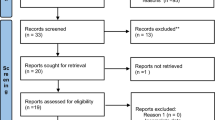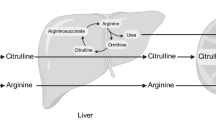Abstract
Chronic administration of melatonin for 5 days to antigen-primed mice increased the production of pro-inflammatory cytokine IL‐10 but decreased the secretion of anti‐inflammatory cytokine TNF-α. These results further confirm that melatonin activates Th2‐like immune response. Whether melatonin‐mediated Th2 response is dependent on opioid or central and peripheral benzodiazepine receptors was also examined. Hence, melatonin was administered to antigen-sensitised mice with either naltrexone (a μ opioid receptor antagonist) or flumazenil (a central benzodiazepine receptor antagonist) or PK11195 (a peripheral benzoidiazepine receptor antagonist). No significant difference in melatonin-induced Th2 cell response was observed by naltrexone, flumazenil or PK11195 treatment. These findings suggest that the Th2 cell response induced by melatonin in antigen sensitised mice neither dependent on endogenous opioid system nor is modulated through the central or peripheral benzodiazepine receptors.
Similar content being viewed by others
References
Liebmann PM, Wolfer A, Felsner P, Hofer D, Schauenstein K: Melatonin and the immune system. Int Arch Allergy Immunol 112: 203–211, 1997
Maestroni GJM, Conti A, Pierpaoli W: Role of the pineal gland in immunity. Circadian synthesis and release of melatonin modulates the antibody response and antagonizes the immuno-suppressive effect of corticosterone. J Neuroimmunol 13: 19–30, 1986
Maestroni GJM, Conti A, Pierpaoli W: Role of the pineal gland in immunity: II. Melatonin enhances the antibody response via an opiatergic mechanism. Clin Exp Immunol 68: 384–391, 1987
Maestroni GJM, Conti A, Pierpaoli W: Role of the pineal gland in immunity. III. Melatonin antagonizes the immuno suppressive effect of acute stress via an opiatergic mechanism. Immunology 63: 465–469, 1988
Caroleo MC, Frasca D, Nistico G, Doria G: Melatonin as an immunomodulatory in immunodeficient mice. J Immunopharmacol 23: 81–89, 1992
Steinhilber D, Brungs M, Werz O, Wiesenberg I, Danielsson C, Kahlen JP, Nayeri S, Schrader M, Carlberg C: The Nuclear receptor for melatonin represses 5-lipoxygenase gene expression in human B lymphocytes. J Biol Chem 270: 7037–7040, 1995
Garcia-Perganeda A, Guerrero JM, Rafii-El-Idrissi M, Romero MP, Pozo D, Calvo JR: Characterization of membrane melatonin receptor in mouse peritoneal macrophages: Inhibition of adenylyl cyclase by a pertusis toxin-sensitive G protein. J Neuroimmunol 95: 85–94, 1999
Garcia-Perganeda A, Pozo D, Guerrero JM, Calvo JR: Signal transduction for melatonin in human lymphocytes: Involvement of a pertusistoxin-sensitive G-protein. J Immunol 159: 3774–3781, 1997
Rafii-El-Idrissi M, Calvo JR, Harmouch A, Garcia-Mourino S, Guerrero JM: Specific binding of melatonin by purified cell nuclei from spleen and thymus of the rat. J Neuroimmunol 86: 190–197, 1998
Maestroni GJM, Conti A: The pineal neurohormone melatonin stimulates activated CD4+ Th1 cells to release opioid agonist(s) with immunoenhancing and anti-stress properties. J Neuroimmunol 28: 167–176, 1990
Tenn CC, Niles LP: Central type benzodiazepine receptors mediate the anti dopaminergic effect of clonazepam and melatonin in 6-hydroxydopamine lesioned rats: Involvement of GABAergic mechanism. J Pharmacol Exp Ther 274: 84–89, 1995
Golombek DA, Pavet P, Cardinali DP: Melatonin effects on behavior: Possible mediation by the central GABAergic system. Neurosci Biobehav Rev 20: 403–412, 1996
Raghavendra V, Kulkarni SK: Reversal of morphine tolerance and dependence by melatonin: Possible role of central and peripheral benzodiazepine receptors. Brain Res 834: 178–181, 1999
Lenfant M, Haumont J, Zavala F: In vivo immunomodulating activity of PK11195, a structurally unrelated ligand for ‘peripheral’ benzodiazepine binding site: I. Potentiation in mice of the humoral response to sheep red blood cells. Int J Immunopharmacol 8: 825–829, 1986
Zavala F, Taupin V, Descamps-Latscha B: In vivo treatment with benzodiazepines inhibits murine phagocyte oxidative metabolism and production of interleukin 1, tumor necrosis factor and interleukin 6. J Pharmacol Exp Ther 255: 442–450, 1990
Matsumoto T, Ogata M, Koga K, Shigematsu A: Effect of peripheral benzodiazepine receptor ligands on lipopolysaccharide-induced tumor necrosis factor activity in thioglycolate-treated mice. Antimicrob Agents Chemother 38: 812–816, 1994
Shaji AV, Kulkarni SK, Agrewala JN: Regulation of secretion of IL-4 and IgG1 isotype by melatonin-stimulated ovalbumin-specific T cells. Clin Exp Immunol 111: 181–185, 1998
Sugden D: Psychopharmacological effects of melatonin in mouse and rat. J Pharmacol Exp Ther 227: 587–591, 1995
Agrewala JN, Suvas S, Verma RK, Mishra GC: Differential effect of anti-B7-1 and anti-M150 antibodies in restricting the delivery of costimulatory signals from B cells and macrophages. J Immunol 160: 1067–1077, 1998
Raghavendra V, Agrewala JN, Kulkarni SK: Melatonin reversal of lipopolysacharides-induced thermal and behavioral hyperalgesia in mice. Eur J Pharmacol 395: 15–21, 2000
Bottomly KA: A functional dichotomy in CD4+ T lymphocytes. Immunol Today 9: 268–274, 1998
Janeway CA, Bottomly K: Signals and signs for lymphocyte response. Cell 76: 275–285, 1994
Jenkins MK: The ups and downs of T cell co-stimulation. Immunity 1: 443–449, 1994
Paul WE, Seder RA: Lymphocytes responses and cytokines. Cell 76: 241–251, 1994
Agrewala JN, Wilkinson RJ: Influence of HLA-DR on the phenotype of CD4+ T lymphocytes specific for an epitope of the 16-kDa α-crystalline antigen of Mycobacterium tuberculosis. Eur J Immunol 29: 1753–1761, 1999
Briere F, Severt C, Bridon JM, Saint RJ, Banchereau J: Human interleukin 10 induces naïve surface immunoglobulin D+ (sIgD) B cells to secrete IgG1 and IgG3. J Exp Med 179: 757–762, 1994
Moore KW, O'Garra A, De Waal-Malefyt R, Vieira P, Mosmann TR: Interleukin-10. Ann Rev Immunol 11: 165–190, 1993
Flores LR, Wahl SM, Bayer BM: Mechanisms of morphine-induced immuno-suppression: Effect of acute morphine administration on lymphocyte trafficking. J Pharmacol Exp Ther 272: 1246–1251, 1995
Roy S, Chapin RB, Cain KJ, Charboneau RG, Ramakrishnan S, Barke RA: Morphine inhibits transcriptional activation of IL-2 in mouse thymocytes. Cell Immunol 179: 1–9, 1997
Jonsdottir IH, Johansson C, Asea A, Hellstrand K, Thoren P, Hoffmann P: Chronic intracerebroventricular administration of beta-endorphin augments natural killer cell cytotoxicity in rats. Reg Pept 62: 113–118, 1996
Hellstrand K, Hermodasson S: Role of serotonin in the regulation of human natural killer cell cytotoxicity. J Immunol 139: 869–875, 1987
Woolf CJ, Allehorne A, Garabedian SB, Poole S: Cytokine, nerve growth factor and inflammatory hyperalgesia: The contribution of tumor necrosis factor alpha. Br J Pharmacol 121: 417–424, 1997
Kanaan SA, Garabedian BS, Haddad JJ, Abadelnoor AM, Atweh SF, Jabbur SJ, Saade NE: Effects of various analgesic and anti-inflammatory drugs on endotoxin-induced hyperalgesia in rats and mice. Pharmacology 54: 285–297, 1997.
Lenfant M, Zavala F, Haumont J, Potier P: Presence d'un site de fixation de ‘type peripherique’ des benzodiazepines sur le macrophages; son roleeventuel dans l'immunomodulation. C R Acad Sci Ser III Sci Vie 300: 309–314, 1985
Martins E Jr, Fernandes LC, Bartol I, Cipolla-Neto J, Costa-Rosa LFBP: The effect of melatonin chronic treatment upon macrophage and lymphocyte metabolism and function in Walker-256 tumour-bearing rats. J Neuroimmunol 82: 81–89, 1998
Nava F, Calpai G, Facciola G, Cuzzocrea S, Giuliani G, De Sarro A, Caputi AP: Melatonin effects on inhibition of thirst and fever induced by lipopolysaccharides in rat. Eur J Pharmacol 331: 267–274, 1997
Carmel I, Fares FA, Leschiner S, Scherubl H, Weisinger G, Gavish M: Peripheral type benzodiazepine receptors in the regulation of proliferation of MCF-7 human breast carcinoma cell line. Biochem Pharmacol 59: 831–842, 1999
Gavish M, Bachman I, Shoukrun R, Katz V, Veenman L, Weisinger G, Weizman A: Enigma of the peripheral benzodiazepine receptor. Pharmacol Rev 51: 629–650, 1999
Karasek M, Pawlikowski M: Pineal gland, melatonin and cancer. Neuroendocrinol Lett 20: 139–144, 1999
Author information
Authors and Affiliations
Rights and permissions
About this article
Cite this article
Raghavendra, V., Singh, V., Kulkarni, S.K. et al. Melatonin enhances Th2 cell mediated immune responses: Lack of sensitivity to reversal by naltrexone or benzodiazepine receptor antagonists. Mol Cell Biochem 221, 57–62 (2001). https://doi.org/10.1023/A:1010968611716
Published:
Issue Date:
DOI: https://doi.org/10.1023/A:1010968611716




